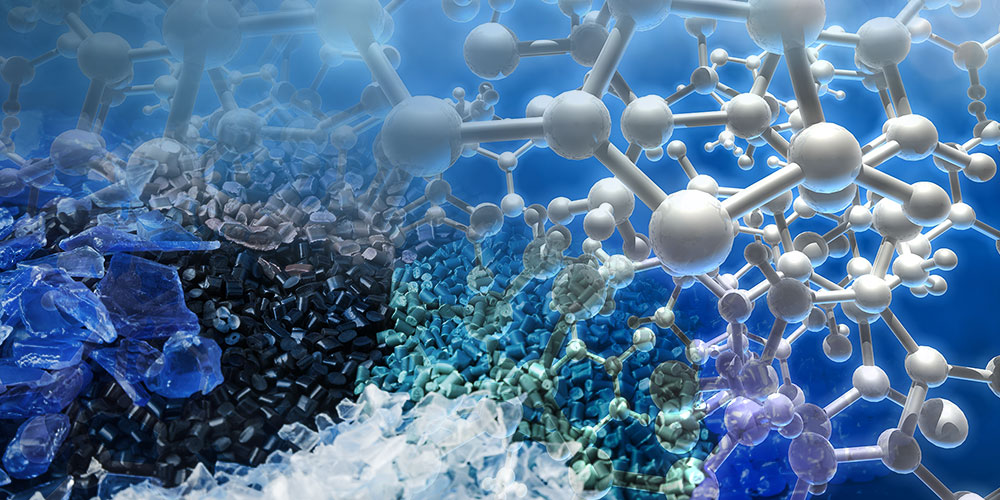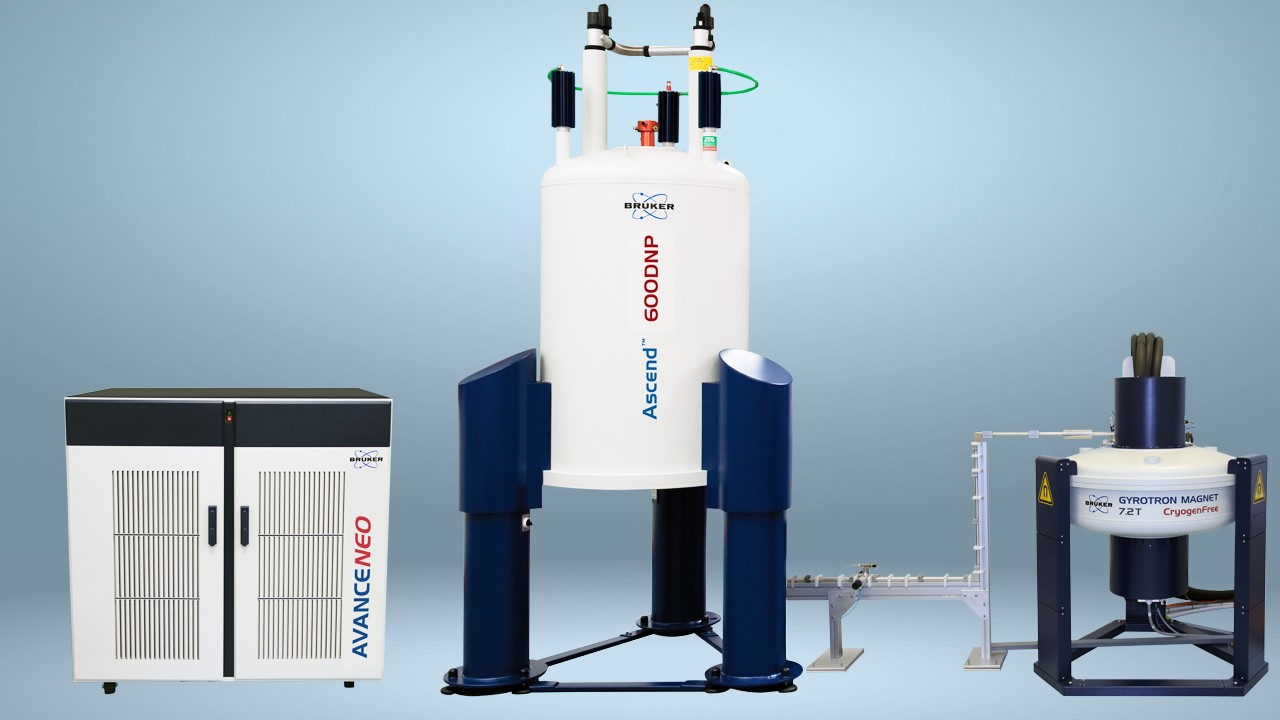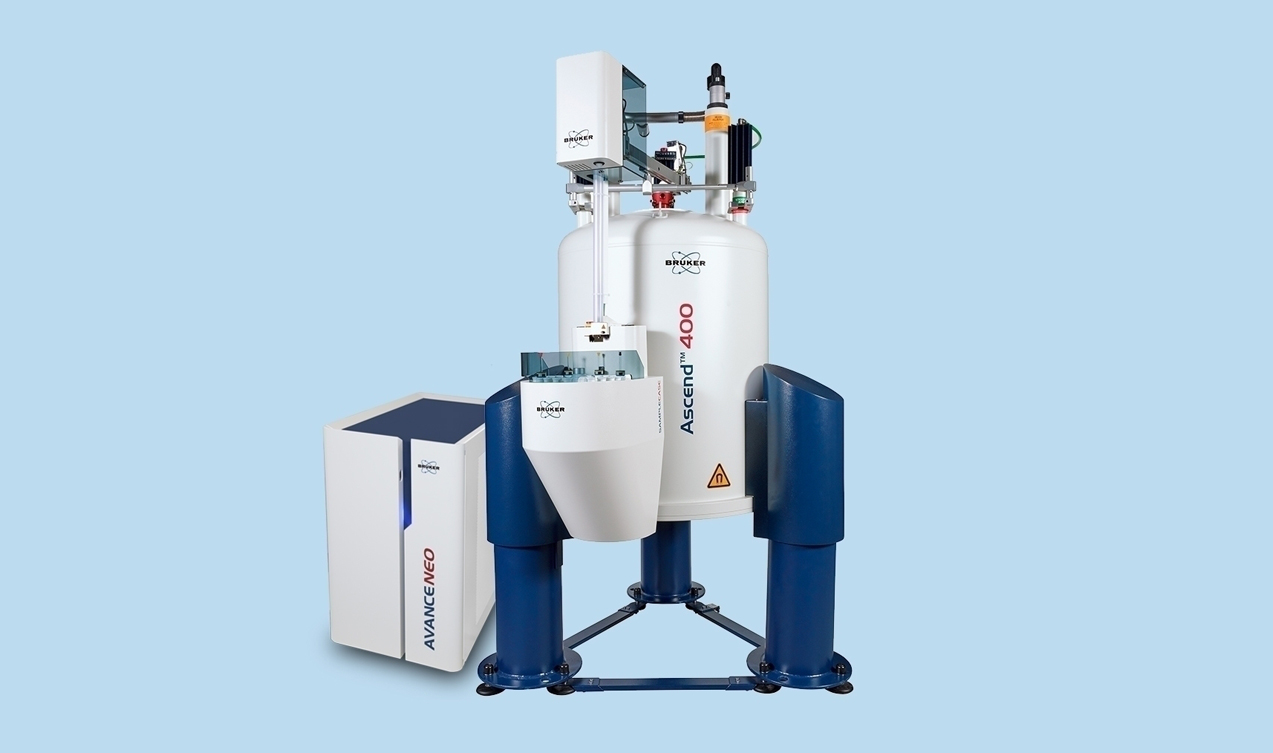

DNP-NMRの材料科学のアプリケーション
The study of structural components of solid-state compounds in the material sciences often relies on the use of nuclear magnetic resonance (NMR). While NMR is an effective method for gaining an observation of structure and activity of small compounds, its low level of sensitivity can obstruct researchers from performing a time-efficient experiment. Dynamic nuclear polarization (DNP) has become increasingly prevalent in NMR studies to enhance signal intensity and reduce experiment duration.
In addition to boosting signal intensity in NMR, DNP can enhance spectroscopic sensitivity, providing more opportunities in the study of materials in NMR studies. DNP-NMR spectroscopy assists in studying biological structures, activity, and interactions in materials such as bio-materials, catalysts, functionalized silica, nanoparticles, mesoporous samples, and natural and synthetic polymers.
Catalysts
The higher level of sensitivity exerted by DNP has become increasingly important in the catalytic sciences, helping researchers improve their comprehension of various catalytic processes. Heterogeneous catalytic systems have been consistently studied by standard NMR techniques, offering insight into active sites, catalyst supports and interactions, and reacting molecules.
Bruker’s commercial DNP-NMR spectrometers function at 9.4, 14.1, and 18.8T. Perhaps the most ideal choice for DNP in catalysts applications involves using one of the lowest field Bruker spectrometer, the 9.4T.
Functionalized silica
Hybrid organic silica is made up of various organic components that are covalently bound to a silica matrix. A molecular characterization of silica functional groups can help facilitate further understanding of silica activity, specifically in regard to the modes of interaction and binding on the surface.
One study using DNP-NMR looked at the interaction between biomolecular solids to functionalized silica, using biradical TOTAPOL in solvent. Following analyzation of the compound with DNP-NMR, researchers found that DNP enabled a deeper look into the patterns of silica-surface functional groups in the matter of minutes.
Mesoporous samples
Mesoporous materials, like mesoporous silica, is commonly used in the study of catalysis and drug delivery. To study the interaction between the surface of materials and other compounds, DNP-NMR is commonly used to produce a clear image of the compounds’ activity. NMR spectroscopy’s low sensitivity is further impeded by the small fraction of surface sites on mesoporous samples.
Using DNP, researchers are able to transfer the large polarization of unpaired electrons to surrounding nuclei and provide a signal enhancement between 10 and 200, reducing experiment time and improving the quality of the overall experiment.
Polymers
High-field DNP can also improve sensitivity in experiments studying natural and synthetic polymers. According to some reports, sensitivity enhancements between 5 and 40 have been noted, depending on polymer type, DNP sample preparation method, and molecular weight.
In certain polymers showing a high level of affinity for oxygen, researchers might be able to increase proton nuclear relaxation times by removing the absorbed oxygen from powdered solid-state samples. This, in turn, can provide a two-fold sensitivity increase in the DNP-NMR experiment, resulting in a greater reduction in experiment duration.
DNP-NMR spectrometer by Bruker
材料科学の分野では、固体材料の構成成分の研究にNMRがよく用いられます。NMRは低分子化合物の構造や活性を観察するのに有効な手法ですが、感度が低く積算を必要とするため、実験に時間がかかる点が課題です。動的核分極法(DNP)は、NMRの信号強度の改善及び実験時間の短縮を目的に普及が進んでいます。
DNPはNMRの信号強度を高めるだけでなく、分光学的な感度を向上させることができるため、NMRによる材料科学の研究に多くのメリットをもたらします。DNP-NMRは、例えばバイオマテリアルにおける、生物学的構造、活性および相互作用研究、さらには、触媒、機能性シリカ、ナノ粒子、メソポーラス材料、天然および合成ポリマーなどの材料の研究をサポートします。
触媒
触媒科学の分野では、DNPの高感度がますます重要になっており、研究者が様々な触媒プロセスの理解を深めるのに役立っています。不均一な触媒システムは、スタンダードなNMRの手法を用いて矛盾のない研究結果が報告されており、活性サイト、触媒の支持体、相互作用および反応分子についての知見が得られています。
ブルカーの市販のDNP-NMRには、9.4、14.1、18.8Tの3種類があります。触媒の分析目的でDNPを使用する場合、最も低磁場の9.4Tが適しています。
機能性シリカ
ハイブリッド有機シリカは、様々な有機成分がシリカマトリックスに共有結合したものです。シリカの官能基を分子レベルで解析することで、シリカの活性、特に表面での結合と相互作用状態に関する理解を深めることができます。
溶媒中のビラジカルTOTAPOLを用いて、固体状態の生体分子と機能性シリカとの相互作用を調べたDNP-NMRの研究があります。この化合物の分析では、DNPを用いることで、シリカ表面の官能基のパターンを数分で詳しく調べることができています。
メソポーラス試料
メソポーラスシリカのようなメソポーラス材料は、触媒作用やドラッグデリバリーの研究によく使われています。材料の表面と他の化合物との相互作用を調べるには、化合物の活性を明確にイメージできるDNP-NMRが一般的に用いられます。メソポーラス試料の表面サイトの割合が少ないため、それをDNPなしのNMRで観測するのは困難なためです。
DNPを使用することで、不対電子の大きな分極を周囲の原子核に移し、10~200倍の信号増強効果を得ることができ、実験時間の短縮と実験全体の質の向上を図ることができます。
ポリマー
高磁場DNPは、天然ポリマーや合成ポリマーを対象とした実験においても感度を向上させることができます。ポリマーの種類、DNPサンプルの調製方法、分子量などにより、5~40%の感度向上が認められたという報告があります。
酸素との親和性が高い特定のポリマーでは、粉末状の固体サンプルから酸素を除去することで、プロトンの緩和時間を長くできる可能性があります。これにより、DNP-NMR実験の感度が2倍に向上し、実験時間を大幅に短縮することが可能になります。
ブルカー社製DNP-NMR
ブルカーが提供するDNP-NMRは、固体NMR実験に固有の感度不足を改善し、一方で、積算の繰り返し時間が短くなることで実験時間の短縮を図れるよう設計されています。材料科学、生物学、薬学などの分野では、様々な化合物の官能基や構造解析の研究にDNP-NMRを使用しています。ブルカーのDNPは、高出力ジャイロトロンシステムを介して不対電子の分極を移動させ、マイクロ波照射によって信号を20倍から200倍に増強します。
References
参考文献
- van der Cruijsen EA, Koers EJ, Sauvée C, et al. Biomolecular DNP-Supported NMR Spectroscopy using Site-Directed Spin Labeling. Chemistry. 2015;21(37):12971-12977.
- Kobayashi T, Perras FA, Slowing II, Sadow AD, and Pruski M. Dynamic Nuclear Polarization Solid-State NMR in Heterogeneous Catalysis Research. ACS Catalysis. 2015;5:7055−7062.
- Lelli M, Gajan D, Lesage A, et al. Fast characterization of functionalized silica materials by silicon-29 surface-enhanced NMR spectroscopy using dynamic nuclear polarization. J Am Chem Soc. 2011;133(7):2104-2107.
- Rossini AJ, Zagdoun A, Lelli M, et al. Dynamic nuclear polarization surface enhanced NMR spectroscopy. Acc Chem Res. 2013;46(9):1942-1951.
- Le D, Ziarelli F2, Phan TN, et al. Up to 100% Improvement in Dynamic Nuclear Polarization Solid-State NMR Sensitivity Enhancement of Polymers by Removing Oxygen. Macromol Rapid Commun. 2015;36(15):1416-1421.


